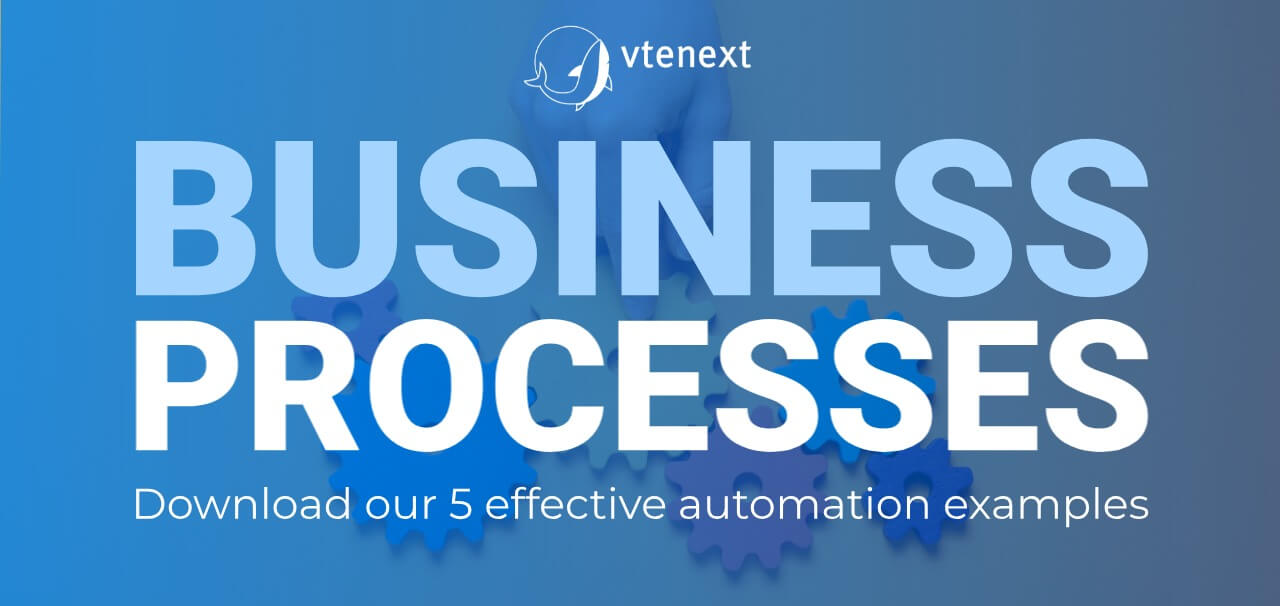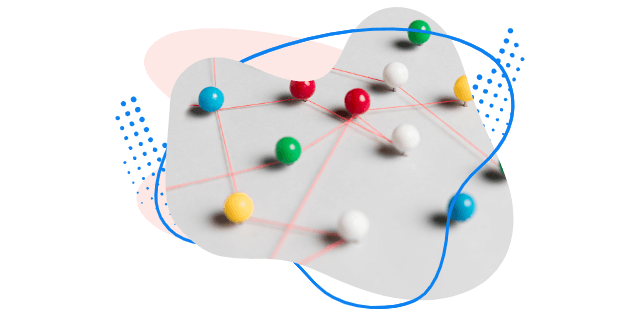The proper management of processes is increasingly crucial for effectively and profitably running an organization. This statement is commonly heard in various contexts, but how does it translate into practice?
The first thing to do is to clearly understand what a business process is, in order to be able to map and digitalize those within one’s own organization effectively.
What is a business process?
A business process can be defined as a series of coordinated activities that converge towards a common goal, following a specific workflow. Processes can involve a wide range of functions and activities, including production, sales, marketing, human resource management, accounting, operations management, and customer service. For example, the production process involves activities such as production planning, raw material acquisition, actual production, quality control, and distribution of the finished product.
The main goal of processes is to ensure efficiency, consistency, and quality in business operations. These processes are often documented, analyzed, and optimized to improve the overall performance of the organization. Process management is a key element of both operational and strategic management of a company and can significantly influence the success and competitiveness of the organization.
Process and procedure are by no means synonymous, as should be evident from this introduction.
A procedure, in fact, is defined as a series of detailed and specific steps that must be followed to perform an activity or complete a task within a process. Procedures provide detailed instructions on how to perform a specific activity in a standardized and uniform manner. They are more detailed than processes and clearly define tasks, responsibilities, and execution methods. For example, within the order management process, there might be a detailed procedure on how to verify inventory, process orders, and generate invoices.
In summary, while the process defines the general flow of activities necessary to achieve a goal, the procedure provides detailed instructions on how to perform specific activities within that process.
What is business process management?
Business Process Management (BPM), also known as process management, is a methodological approach to business management that focuses on the identification, design, implementation, monitoring, and optimization of business processes with the aim of improving efficiency, quality, and flexibility of business operations.
The BPM approach considers business processes as the fundamental element for the overall functioning of the organization. Rather than focusing on individual activities or functions, process management looks at the entire workflow and interactions between various activities involved in achieving a specific goal.
Process management involves several phases:
Process Identification
This involves mapping existing business processes.
Process Design
Once identified and mapped, processes are analyzed to highlight areas for improvement and redundancy. During this phase, best practices, standard procedures, and optimal workflows are defined for each process.
Process Implementation
After design, processes are implemented using appropriate tools and technologies. For example, BPM software, workflow automation, and integration of business systems.
Process Monitoring
Once implemented, processes are constantly monitored to evaluate performance, identify any issues or inefficiencies, and make necessary adjustments to improve operations.
Process Optimization
Based on feedback and data collected during monitoring, processes are optimized to maximize efficiency, reduce costs, improve quality, and adapt to changes in the business environment.
The ultimate goal of process management is to create an agile, efficient, customer-oriented organization capable of quickly adapting to changing market demands and achieving better results with limited resources.
Process management is essential for achieving ISO 9001:2015 certification. This international standard implies a process-based approach to managing a quality management system. Companies adopting it are required to plan and implement processes necessary for the quality management system and control them to ensure they are effective in achieving the intended results. It is also necessary to identify risks and opportunities in processes and take appropriate measures to mitigate risks and exploit opportunities in order to improve the performance of the quality management system. Processes must therefore be documented and constantly monitored.
Business Process Mapping
As we have seen, the first step towards the digitalization of an organization is the mapping of processes, i.e., creating a detailed diagram with all the steps involved in the process, including workflows, responsibilities, and interconnections. Mapping provides a clear and comprehensive overview of how various business operations work and where improvements can be made.
Before starting this activity, it is necessary to define which key processes to focus on and what objectives to achieve: improving efficiency, reducing cycle times, identifying critical points or areas for improvement, or simply documenting existing processes for training or compliance purposes. Another crucial element for good mapping is the involvement of all stakeholders or those affected by the process to be mapped; each of them can contribute to the collection of information, including documents and operating procedures, useful for a complete understanding of how processes are executed.
At this point, all activities involved in the process can be listed, from start to finish, including each step, decision, input, and output associated with the process. The map is a visual representation of the process, which can be created using tools such as flowcharts, Gantt charts, or specific software for process mapping.
The more detailed the map, the easier it will be to identify responsibilities, necessary resources, estimated times, and performance metrics. Once the process map is created, it is necessary to involve the team again to verify that the representation is faithful to operational reality. Process maps are dynamic tools that need to be regularly reviewed and updated.
Digitalization of Business Processes
The digitalization of processes involves transforming manual processes into digital processes, using tools and technologies such as business process management software or document management systems. The more accurate the mapping work, the more we will have the opportunity to digitize verified processes, avoiding digitizing inefficiencies as well.
Digitalization also allows for process automation, resulting in increased operational efficiency, greater productivity, cost reduction, improved accuracy and consistency in operations, as well as a better experience for customers and employees. Technologies and digital tools allow for the automatic execution, monitoring, and management of business activities and workflows without human intervention. This can be done through the implementation of specialized software, business process management systems (BPM), robotics, artificial intelligence, and other technological solutions.
The goals that can be achieved include improving operational efficiency, reducing errors, increasing execution speed, and allocating human resources to tasks with higher added value. There are several ways in which process automation can be implemented and applied in an organization, including:
Workflow Automation
Through the use of BPM software that manages task routing, resource allocation, and deadline notification.
Automation of Repetitive and Low-Value Processes
Requiring little or no human intervention, such as form filling, sending notifications, or generating reports.
Automation of Decision-Making Processes
Using artificial intelligence algorithms based on predefined rules, such as request approval, document classification, or exception management.
Automation of Data Import, Export, and Synchronization Activities Between Different Business Systems.
Automation of Document Management Processes
including indexing, archiving, searching, and distribution.
Automation of Customer Service Processes
using chatbots and automatic response systems capable of handling requests and providing effective answers.
The Role of CRM and BPM Software
Business Process Management (BPM) and Customer Relationship Management (CRM) software play a fundamental role in the digitization and automation of business processes, each with its own functionalities and distinct contributions. By integrating the two software, it is possible to obtain a complete solution for process automation, from the design and execution of business processes to the management of customer relationships and optimization of overall operations. This integration allows for seamless workflow, greater transparency and control, and better ability to meet customer needs quickly and effectively.
Specifically, BPM software is designed to manage and automate business processes, allowing for the modeling, execution, monitoring, and optimization of workflows efficiently and effectively. Intuitive flow charts allow for a clear visualization of activities, workflows, and interconnections between different processes. Automatic process execution is achieved by routing activities to appropriate employees, assigning tasks, sending notifications, and efficiently managing workflows. Advanced tools for monitoring and controlling processes in real-time allow for constant performance verification, identification of inefficiencies, and timely problem resolution.
CRM software, on the other hand, is perfect for managing customer relationships and contributes to the automation of marketing processes, sales processes, and customer service processes. In the marketing field, CRM automates activities such as mass email sending, creation of targeted advertising campaigns, and management of social media to engage customers more effectively. In sales, customer contact management, tracking of customer interactions, management of sales opportunities, and generation of sales performance reports are automated. Finally, in customer service, activities such as handling support tickets, automatic response to customer requests, and creation of a self-service knowledge base are automated.


